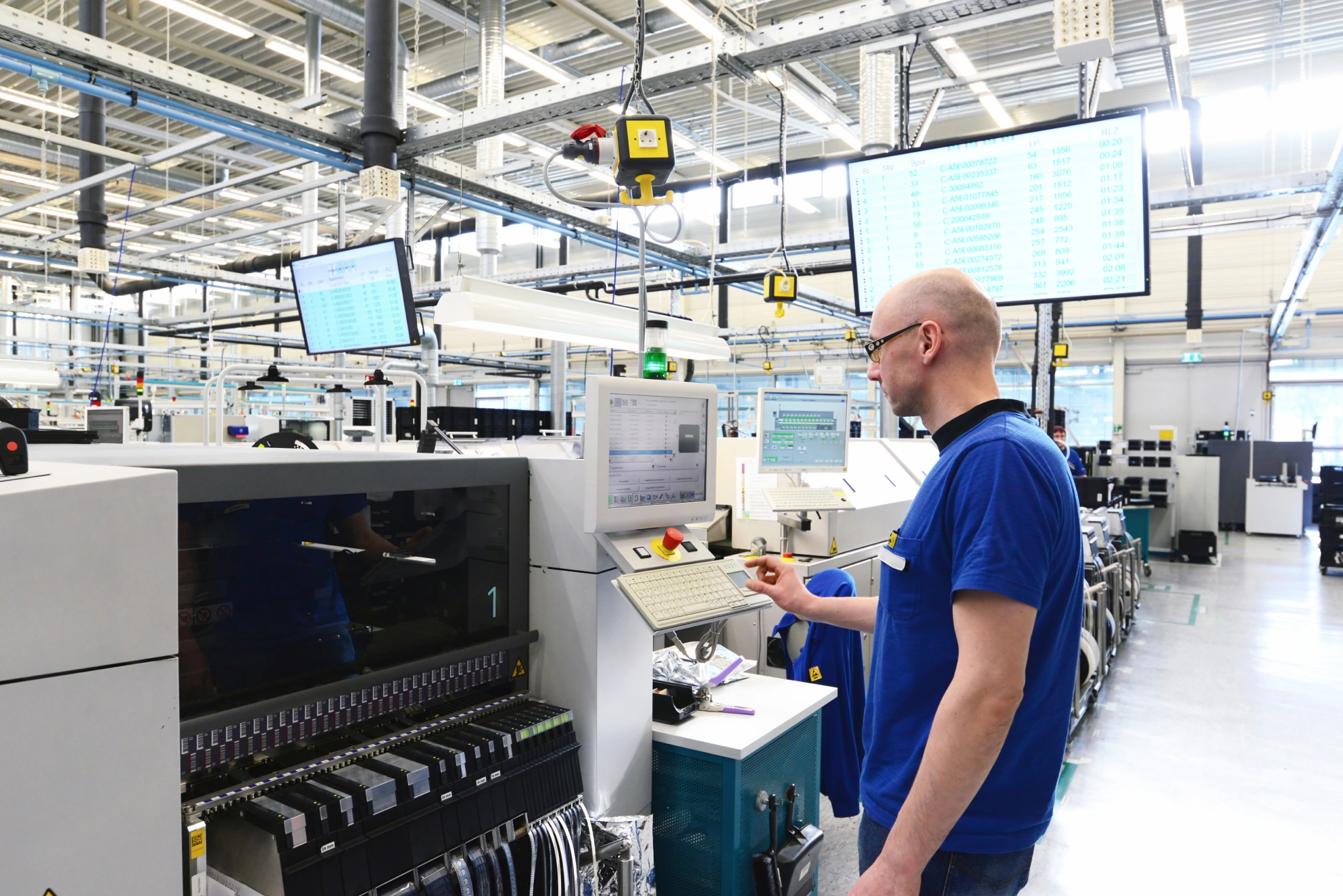The pressure to keep more equipment running, with fewer people, under tighter budgets—and with zero room for failure—is intensifying. But you're not the only one feeling it. Across the industry, maintenance teams are being stretched thin. Headcount isn’t growing, but expectations are. Uptime targets, safety metrics, output goals—they’re all rising.
Meanwhile, unplanned downtime still threatens production. The complexity of modern machinery means every issue takes longer to diagnose and fix. You can’t afford inefficient maintenance practices, but “doing more with less” can feel like code for “work harder with fewer resources.”
If you're a plant manager, maintenance leader, or reliability engineer tasked with protecting performance while managing a leaner team, this post is for you. We’ll explore what smarter maintenance looks like today, how technology is helping high-performing teams stay proactive, and how you can build a lean maintenance strategy that works for your operation.
The shift: maintenance programs under pressure
Lean manufacturing isn’t new, but today’s version comes with sharper constraints. Budget freezes, hiring slowdowns, and skilled labor shortages amid growing economic uncertainty are forcing plants to rethink the way they operate. Many maintenance teams are now expected to:
- Manage more assets and increasing system complexity
- Maintain uptime with fewer technicians
- Justify every dollar spent on maintenance programs and tools
Doing more with less is the new normal in maintenance and reliability. But with the right lean maintenance strategy, it doesn’t have to mean sacrificing performance. In fact, lean teams equipped with the right mix of AI predictive maintenance technology and expert support from a dedicated condition monitoring engineer (CME) can now accelerate maintenance and reliability gains in less time, with less effort, and at lower cost.
Leading manufacturers are embracing lean principles and predictive tools that reduce waste, automate routine work, and help every technician focus where it counts most. Our recent white paper Resilient Reliability: Why Predictive Maintenance Drives Value in Any Economy explains how condition-based, data-driven maintenance can help you weather any economic climate. Download your copy today.
What smart maintenance looks like today
✅ Predictive over preventive maintenance
Old-school preventive maintenance follows a calendar. Whether a machine needs work or not, it gets it. The effect is often overlooked: teams burn hours on unnecessary maintenance work, miss early signs of failure, and scramble to react to breakdowns.
Predictive maintenance is driven by asset condition. With AI-powered condition monitoring and triaxial vibration sensors, teams get a real-time picture of equipment health. This means they can focus on actual risks, not theoretical ones. Condition-based maintenance translates to less guesswork, fewer surprise failures, and more uptime with fewer hands.
✅ CMMS automation that works for technicians
Automation isn’t about replacing people, but giving them better tools. Today’s lean maintenance programs integrate with CMMS platforms to:
- Trigger work orders automatically when CMEs validate alerts and issue maintenance recommendations
- Send mobile alerts based on maintenance priority
- Make it easy to tack work orders to closure and keep CMEs informed
- Track performance metrics like MTTR and asset uptime per technician
When predictive maintenance technology integrates seamlessly with an existing CMMS, the result is a more productive maintenance team that's no longer overwhelmed. There's no disruption of existing workflows, and no more repetitive or duplicate tasks. Teams can stay proactive, focusing on the most urgent issues and optimizing maintenance scheduling—even with fewer boots on the ground.
✅ Centralized visibility across sites
Lean manufacturing depends on clarity: knowing exactly where risks lie, where resources are needed, and where waste can be eliminated. A cloud-based predictive maintenance platform brings asset health data from every site into one unified view.
With this level of visibility, maintenance and reliability leaders can identify high-risk assets at a single facility or many, coordinate responses across teams, and standardize KPIs without adding headcount. The enterprise as a whole benefits from smarter resource allocation and a leaner, more synchronized operation across its entire footprint.
How lean manufacturing teams optimize
By deploying lean maintenance programs, manufacturers are making it easy for lean teams to support hundreds of assets, resolve downtime risks, boost productivity, and maximize efficiency. It all starts with the right foundation:
- Wireless sensors that continuously monitor vibration and temperature without requiring full-time supervision or ongoing maintenance
- AI-powered condition monitoring with predictive analytics to cut through the noise and surface real threats
- Dedicated CME partners who validate the data, help prioritize maintenance tasks, support root cause analysis, and provide prescriptive recommendations
- Mobile apps that cut down paperwork and streamline work order management
- Mobile alerts that keep techs informed no matter where they are
- Rotating site champions who share best practices and keep the program aligned
All of these tools support the core goal of lean maintenance: to reduce waste, lower maintenance costs, and maintain high reliability with fewer resources.
In an effort to boost both uptime and productivity, a leading producer of engineered wood products implemented a predictive maintenance program powered by IoT, AI, and machine learning technologies. After a simple install taking less than two days, the company's digital transformation led to six-figure cost savings within six months. To date, they've saved over $2 million and resolved 130+ downtime risks. Read their story here.
How to build a lean maintenance strategy
Ready to move beyond the “do more with less” mantra and into actual results? Here’s how to create a lean maintenance strategy that works.
Step 1: Identify where time is wasted
Start by tracking what your team is doing, then eliminate or automate low-value tasks. Common time drains include:
- Manual logging of maintenance activities
- Calendar-based PMs that don’t reflect true equipment condition
- Double data entry between systems
Lean maintenance involves streamlining maintenance workflows, minimizing repetitive tasks, and eliminating data silos. A modern CMMS integrated with AI-powered condition monitoring can transform your maintenance process and set the stage for continuous improvement.
Step 2: Prioritize high-impact assets
Not all machines are created equal. A lean maintenance strategy focuses on Tier 1 assets, or those that cause the most problems or incur the highest costs when they fail. These assets are best suited for real-time continuous monitoring. For less critical assets or those less costly to replace, route-based monitoring and even preventive maintenance may be more suitable. A mix of techniques can support a lean maintenance approach in a cost-effective way.
Use asset criticality rankings to guide your maintenance approach, planning, and scheduling. Direct real-time continuous condition monitoring where it matters most—and track how that focus improves uptime and reduces reactive maintenance.
Step 3: Track performance—and share it
One of the best ways to secure long-term buy-in for lean maintenance is to show results. Track metrics like:
- Uptime per technician
- Mean time to repair (MTTR)
- Alert resolution rate
- Percentage of maintenance that’s proactive vs. reactive
Then communicate those wins to all stakeholders. Show your team and corporate leadership that fewer people really can do more—with the right tools and strategy in place.
Not sure how to measure the true impact of a lean maintenance strategy? Download our handy predictive maintenance KPI checklist. With a wide range of metrics supporting both plant-level and corporate goals, you'll be ready to tell the full story.
Checklist: Achieve lean maintenance without sacrificing uptime
Use this quick list to assess your current maintenance program:
✅ Do we perform maintenance based on condition or calendar?
✅ Have we automated basic alerts or workflows?
✅ Are we using asset criticality to guide task planning?
✅ Is data centralized and actionable?
✅ Are our technicians working proactively overall?
If you answered “no” to more than one, you’ve got room to lean up your maintenance operations while maximizing both production and reliability.
Empower your lean team to boost uptime and reduce costs
Given current workforce challenges, tackling the same reactive maintenance issues with a larger maintenance team is no way to compete. Leading manufacturers are winning with smaller teams who are equipped to work smarter, not harder and get better results. Lean maintenance strategies allow you to maintain uptime, reduce waste, and increase efficiency while improving productivity and morale.
By combining condition-based monitoring, AI-driven insights, and expert guidance, you can prevent failures and optimize your workflows. By making every hour count, you can scale impact without increasing headcount.
Learn how to build a more resilient operation with lean maintenance principles
What's the secret to manufacturing success in any economic climate? In our recent white paper Resilient Reliability: Why Predictive Maintenance Drives Value in Any Economy, you'll learn how AI-powered tools and expert-guided strategies are ushering in lean maintenance practices and optimal outcomes across industries. Get your copy today, and discover how to future-proof your facility with a leaner team.


















